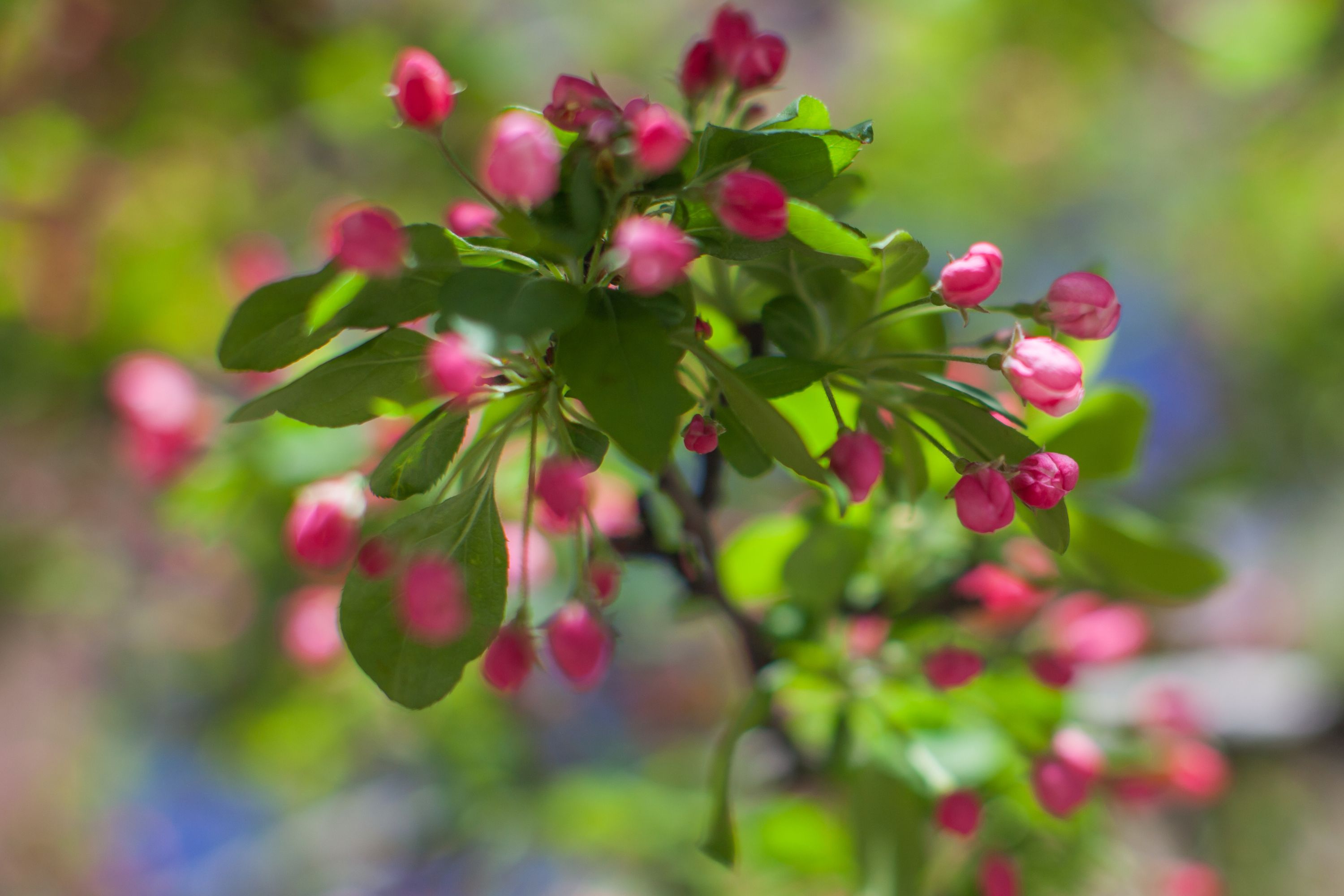Iowa crabapple
(Malus ioensis)

Description
Malus ioensis, commonly known as the Iowa crabapple, is a deciduous tree native to the Midwestern United States. With its captivating blossoms, vibrant fruits, and ecological significance, this species has become a popular choice for both homeowners and wildlife enthusiasts. In this article, we will explore the various aspects of Malus ioensis, including its taxonomy, morphology, distribution, habitat preferences, cultural significance, and ecological role. Taxonomy and Nomenclature Malus ioensis belongs to the Rosaceae family, which includes numerous other important fruit-bearing trees such as apples, pears, and cherries. The genus Malus comprises about 30-55 species of flowering plants, most of which are native to Asia. The specific epithet "ioensis" refers to Iowa, the state where this species was first described and is predominantly found. Morphology The Iowa crabapple is a small to medium-sized tree, typically growing between 15 and 30 feet (4.5-9 meters) in height. Its crown is rounded or irregular, providing an attractive silhouette. The leaves are alternate, simple, and ovate to elliptical in shape, with finely serrated margins. They exhibit a dark green color during the summer months, transforming into vibrant hues of yellow, orange, or red in the fall. Flowers and Fruits: One of the most captivating features of Malus ioensis is its abundant and showy flowers. The tree produces clusters of fragrant, pink to white blossoms, which typically emerge in spring. These flowers attract various pollinators, including bees and butterflies, making the Iowa crabapple an essential resource for local ecosystems. Following successful pollination, the flowers give way to small, spherical fruits known as crabapples. These fruits are usually 0.5 to 1 inch (1.3-2.5 cm) in diameter and range in color from green to yellow or red. While they may not be as large or as sweet as cultivated apple varieties, they are an important food source for birds, mammals, and other wildlife. Distribution and Habitat Malus ioensis, commonly known as the Iowa crabapple, is native to the Midwestern United States. It is primarily found in states such as Iowa, Illinois, Missouri, and Nebraska. Within this region, the Iowa crabapple can be observed growing in a variety of habitats. This species thrives in both natural and disturbed environments. It can be found in woodlands, where it often occurs along the edges or within the understory of forested areas. The Iowa crabapple is also well-adapted to open habitats such as savannas and prairies, where it benefits from the ample sunlight and space available for growth. In terms of soil preferences, Malus ioensis is adaptable and can tolerate a range of soil types. It can be found growing in loamy, sandy, or clay soils, as long as they are well-drained. The Iowa crabapple is relatively tolerant of drought conditions, making it suited for the often variable climate of the Midwest. While Malus ioensis has a native range in the Midwestern United States, its adaptability and horticultural appeal have led to its cultivation in other regions with similar temperate climates. It is important to note, however, that introducing non-native species can have unintended ecological consequences, so it is recommended to prioritize the use of native plants in landscaping practices. Cultural Significance The Iowa crabapple holds cultural significance in the Midwest, particularly in Iowa, where it is the state tree. It is celebrated for its beauty and its connection to the region's natural heritage. The tree's stunning spring blooms and vibrant autumn foliage make it a popular choice for landscaping, providing aesthetic value to gardens, parks, and urban areas. Ecological Role Malus ioensis plays a crucial role in supporting local ecosystems. Its flowers serve as an essential source of nectar and pollen for bees and butterflies, contributing to pollination and the reproduction of numerous plant species. The crabapples, with their high sugar content, provide a valuable food source for birds, including species like cedar waxwings and American robins, which rely on them during the colder months when other food options are limited. Conservation Status Malus ioensis is not currently listed as a threatened or endangered species. However, like many native plants, it faces habitat loss due to urban development and the expansion of agriculture. To ensure the preservation of this species, it is important to promote its cultivation in gardens, support the protection of natural areas, and encourage the use of native plants in landscaping practices. Conclusion Malus ioensis, the Iowa crabapple, is a remarkable tree that brings beauty, ecological benefits, and cultural significance to the Midwestern landscape. Its attractive flowers, vibrant fruits, and ability to support local wildlife make it a valuable addition to any environment. As we appreciate the splendor of the Iowa crabapple, let us also recognize the importance of preserving and cultivating native species like Malus ioensis to maintain the ecological balance and cultural heritage of our natural surroundings.
Taxonomic tree:







